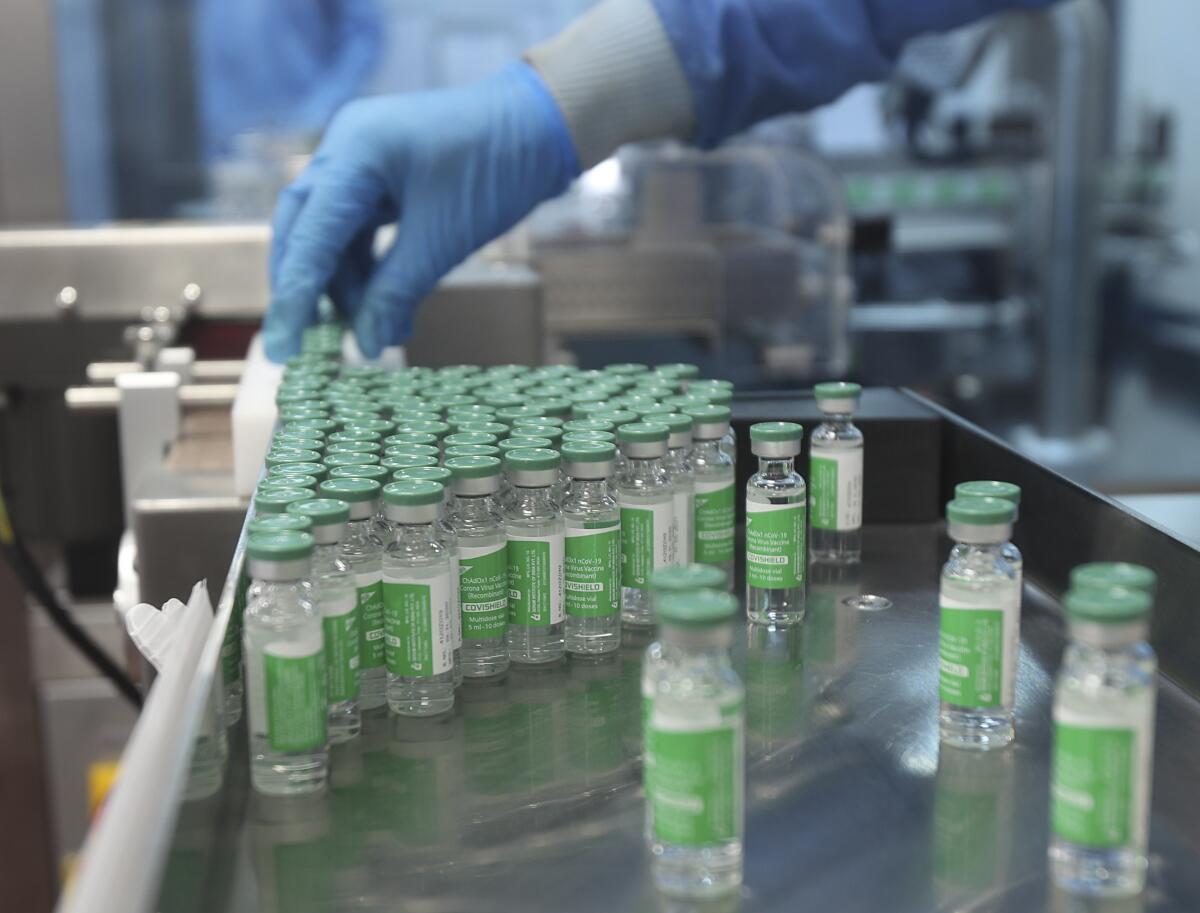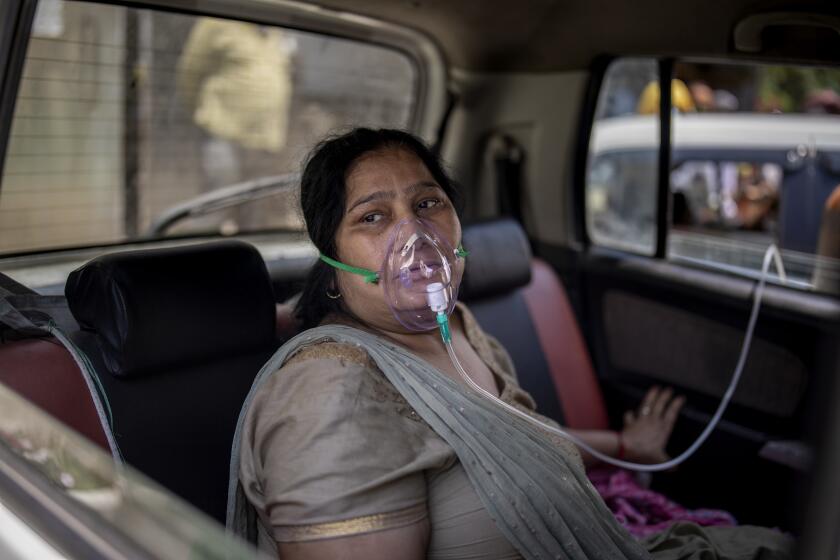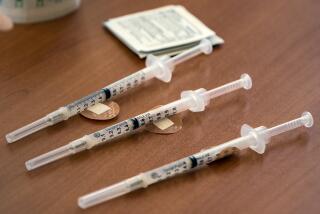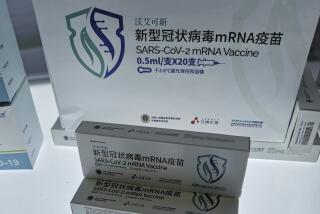Vaccine companies and the U.S. government snubbed WHO initiative to scale up global manufacturing

COVID-19 vaccines were still in the early stages of development last spring, but Costa Rican President Carlos Alvarado Quesada was thinking ahead.
Even if those efforts were successful, he figured, wealthy nations alone wouldn’t be able to make enough vaccine to quickly inoculate billions of people.
His solution: a program, launched by the World Health Organization last May that aimed to train dozens of pharmaceutical manufacturers in Latin America, Asia and Africa to increase worldwide production of vaccines once they came on the market.
But the effort, known as the COVID-19 Technology Access Pool, or C-TAP, went nowhere.
Pfizer and Moderna — backed by the Trump administration — were concerned about protecting the trade secrets of their mRNA technology and refused to participate.
As a result, the job of manufacturing vaccine for much of the world fell largely on a single producer in India, the Serum Institute, a central manufacturer for the vaccine developed by AstraZeneca.
Now facing its own COVID-19 catastrophe, India has all but halted its vaccine exports, leaving dozens of mostly poor countries it supplies in the lurch — a problem that experts said could have easily been avoided had vaccine makers signed on to C-TAP.
“We could have had production hubs in South Africa, Vietnam, Senegal, Latin America, you name it — and when India had a problem, you wouldn’t have destroyed production for the whole planet,” said Matthew Kavanagh, the director of the Global Health Policy and Governance Initiative at Georgetown’s O’Neill Institute.
“The sole reason these vaccines aren’t being produced widely by other makers is because these companies don’t want to give up their monopoly,” he said. “Instead, we put all the world’s eggs into one basket. It’s a tragedy.”
In multiple countries, the COVID-19 pandemic has reached one of its bleakest points yet.
Now the pressure is increasing on the Biden administration to increase the worldwide production and distribution of vaccine.
In a briefing with reporters on Friday, Gayle Smith, the State Department’s coordinator for global COVID response and health security, declined to say whether the Biden administration will endorse C-TAP, but said it was “actively looking at what the options are for increasing production.”
In early January, Dr. Anthony Fauci was asked whether he believed the United States should back C-TAP.
“That’s an easy answer,” he said. “Yes, yes, yes.”
Biden appears more enthusiastic than his predecessor about aiding in the global delivery of vaccines, signing the U.S. on to the initiative known as COVAX, which collects and distributes available vaccines as equitably as possible.
Biden is also considering whether to support a temporary waiver on intellectual property rights at the World Trade Organization that would allow developing countries to produce COVID-19 vaccines without legal consequences.
It was proposed by India and South Africa and endorsed by 100 Nobel Prize winners, but has been blocked by the United States and the European Union.
Even if a waiver were granted, intellectual property lawyers said there could be long delays until production because the patents don’t include the details of the manufacturing process, leaving developing countries to reverse-engineer the formulas.
Alternatively, C-TAP would set up tech hubs around the world, where selected manufacturers would gain the start-to-finish production know-how. The vaccine companies would maintain more control over the scale-up than they would through the proposed intellectual property waivers and allow them to collect royalties.
“C-TAP could potentially provide a win-win solution,” said Dr. Mariangela Simao, WHO’s assistant director general for Access to Medicines, Vaccines and Pharmaceuticals. “It could allow for expansion of manufacturing ... and at the same time, offer holders of IP a middle-ground option.”
C-TAP officials met privately over the past year with representatives from Moderna and BioNTech, among other private sector players, to describe the potential for public health gain, according to meeting minutes reviewed by The Times.
The mRNA-based vaccines are, in some ways, ideal candidates for global scale-up: Both Moderna and Pfizer-BioNTech shots showed stunningly high efficacy figures and, because they’re programmed with a genetic code, they’re easily adaptable to new strains that arise.
But the vaccine companies are wary of handing over their trade secrets to any WHO-designated manufacturer, preferring instead to enter into licensing agreements with a more limited number of production facilities they choose.
COVID-19 vaccines are likely only the first triumph for mRNA technology, which is expected to offer big dividends in future global health efforts to fight diseases such as malaria, HIV and cancer.
“Who wouldn’t want to keep that monopoly?” Kavanagh said. “So the pool was open, but nobody got in it.”
A spokeswoman for Pfizer said Thursday that the company has “a deep sense of responsibility to help ensure that our vaccine is made available to all.” The company has allocated 36% of its doses for supply to low- and middle-income countries, she said, and has an advance purchase agreement to provide up to 40 million doses to COVAX in 2021.
In the past, the chief executive of Pfizer, Albert Bourla, has called the concept of C-TAP “nonsense” and “dangerous.”
Moderna did not respond to requests for comment.
The WHO doesn’t have much leverage over companies like Moderna — but the White House does. Even before the pandemic, taxpayers funded years of mRNA research through the National Institutes of Health and other agencies. In 2020, Moderna benefited tremendously from Operation Warp Speed — the Trump administration’s program to speed vaccine development — and became profitable for the first time ever, with sales expected to top $18 billion this year.
The federal government also holds the patent for the NIH’s spike protein technique that works as the linchpin of the Moderna and Pfizer-BioNTech vaccines. Moderna could owe $1.8 billion to the government for 2021 sales alone, according to a study from New York University’s Technology Law & Policy Clinic.
The NYU researchers, along with Barney Graham, an NIH scientist behind the spike protein technique, have said the White House could bring those levers to bear, effectively forcing companies to share their approach with the rest of the world.
Tech transfers are considered more cost-effective and sustainable than vaccine donations, since production lines can be used later to make booster vaccines and fight future outbreaks, said Yuan Qiong Hu, a policy co-coordinator for the Access Campaign at Doctors Without Borders, a humanitarian organization.
About 11 billion doses of vaccine are needed to inoculate the planet quickly, but just over 1 billion have been administered. Just 0.2% of all doses have gone to low-income nations.
A failure to scale up global manufacturing could hurt not only poor countries but rich ones too. Uncontrolled transmission can lead to new strains — like the B.1.617 variant first identified in India and now found in at least 10 countries, including the United States — and potentially resistance to vaccines.
“Perhaps what is currently happening in India and elsewhere will provide an extra incentive for companies to use this tool and contribute to real solutions to the inequity,” said Dr. Simao of the WHO.
The WHO released a memo on April 16 in search of a pharmaceutical company or research institution with mRNA expertise to help establish a tech hub to train manufacturers in low- and middle-income countries.
“They probably don’t want to be disturbed by having lots of people coming to them to learn the technology,” said Dr. Martin Howell, the coordinator of the WHO Initiative for Vaccine Research. But if a group with clinical efficacy data would be interested in helping establish a hub, “that would be fantastic,” he said.
In other words, their new approach to scaling up mRNA vaccines: If Moderna and Pfizer-BioNTech won’t do it, survey the many mRNA researchers who came before them — and the companies planning to compete with them — who might.
Times staff writer Tracy Wilkinson contributed reporting from Washington.
More to Read
Start your day right
Sign up for Essential California for news, features and recommendations from the L.A. Times and beyond in your inbox six days a week.
You may occasionally receive promotional content from the Los Angeles Times.









